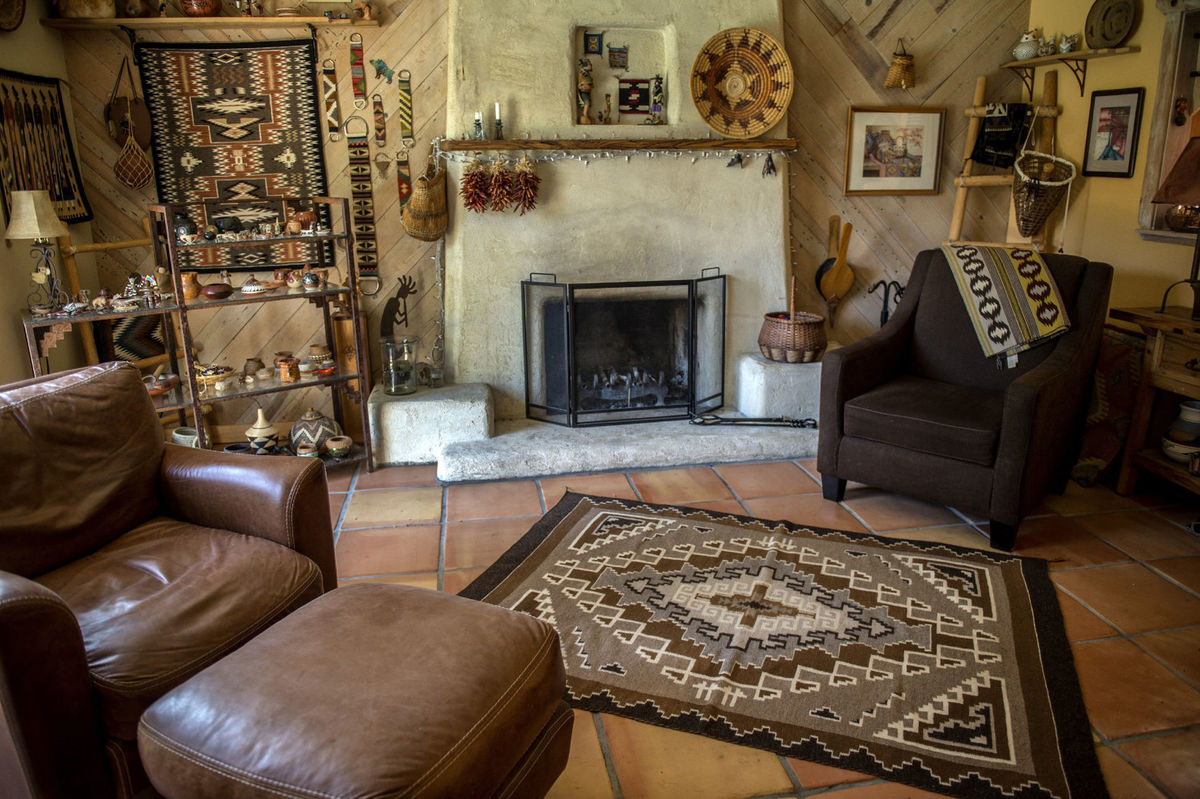
Marilyn Greaves of Fair Oaks, Calif. may have been born and raised in Sacramento, but her heart belongs to Navajo country.
“I’ve always loved the Southwest and all the things that go with it,” said the Fair Oaks woman. “I bought a little rug in the early ’90s—and just went from there.”
Her first Navajo rug—a small memento for a Sacramento traveler—became the cornerstone of a fantastic collection, mostly handmade by Greaves.
Rugs and blankets woven in the Navajo tradition fill her home. Hanging from hooks, draped over furniture or displayed on walls and floors, these woolen masterworks represent countless hours Greaves has spent on wooden looms she also made herself.
“I do carpentry, too,” she said. “I’ve always been handy.”
Starting as a self-taught weaver, Greaves has become Northern California’s leading expert and teacher on the Navajo tradition. She’s made many trips to Arizona and New Mexico to study with Navajo weavers and learn the intricacy of their craft. For her workshops and demonstrations (including this weekend), she teams with Mel Silva, another weaver she met at an upholstery workshop a quarter century ago.
“I did other crafty things, but weaving is what I love the most,” she said. “I enjoy the teaching, too, because I enjoy the people. Fiber artist people are fabulous; we’re warm and tactile.”
What makes Navajo weaving different is its density. Meant to keep out cold and hold up to years of heavy wear, the weave is extremely tight. Even when cut, it will not unravel. Natural dyes color the wool. Reversible, the final piece is finished on both sides.
“The best rugs are made with wool from churro sheep, [a breed raised by the Navajo],” she explained. “It’s a small breed of sheep with a double coat. It’s great wool that lasts a long time and is very durable. It’s not a soft wool; it’s coarse and got some bulk to it.”
With geometric symbols representing weather, creatures and terrain, design motifs can be traced back to the regional trading posts that originally bought and sold rugs from Navajo weavers. The most famous is Two Grey Hills, “the Cadillac of all Navajo rugs,” Greaves said.
While echoing Navajo symbolism in her designs, Greaves adds her own hallmark to the lower right-hand corner of her rugs: a tiny bat made of interlocking triangles.
“I absolutely love bats,” she said. “That’s my spirit animal.”
Although she’s given a few pieces away, Greaves doesn’t sell her work. “I weave in the Navajo tradition, but I’m not a Navajo,” she said. “It’s ethical. I don’t want people thinking (her work) was done by a Navajo.”
Yet her work and techniques match those used for generations in the Southwest.
“We don’t use shuttles,” Greaves explained. “We weave with short pieces of yarn. We work the loom manually with our hands.”
The only tools are wooden push sticks (to help guide the yarn) and combs or beaters (to tighten the weave).
“You’ve got to be patient,” she said. “This is not instant gratification.”
Although she alternates work on several pieces, each rug takes hundreds of hours. She expects a 3- by 5-foot rug currently on her loom will take about 800 hours to complete. Several of her rugs occupied months, sometimes more than a year, before they were done.
“Finishing is the most difficult part of weaving a rug,” she said, “because you’re trying to squeeze wool into this small space. That takes a lot of time and skill.”
During her workshops, she teaches students how to make a 10- by 12-inch mini-rug.
“I’m happy if they make it halfway through that project in three days,” Greaves added. “But they’re learning the process, and that’s what it takes. Hands-on learning is really important for Navajo weaving. You can’t learn it out of a book.”
[“Source-fredericksburg”]
